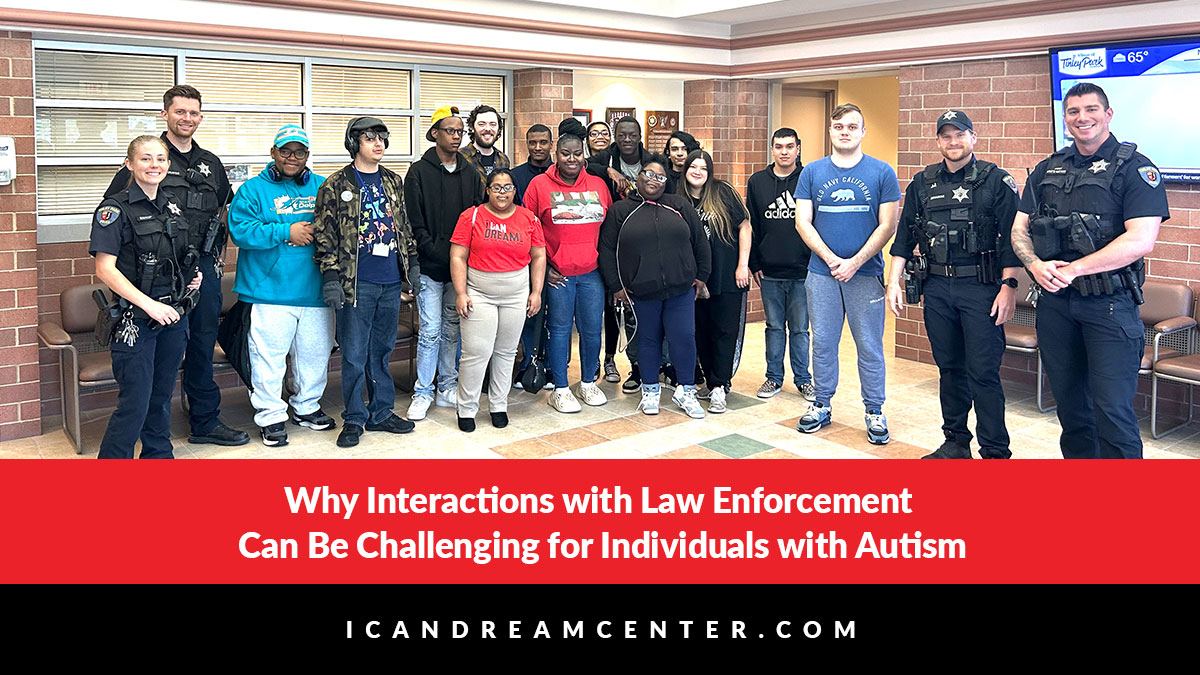
Why Interactions with Law Enforcement Can Be Challenging for Individuals with Autism
Interactions with law enforcement can be challenging and stressful for anyone. However, for individuals with autism, these encounters often pose unique risks and difficulties. Despite increased awareness and efforts to accommodate neurodiversity, people with autism remain particularly vulnerable to negative interactions with police. Understanding why this is the case is essential for fostering safer and more supportive communities.
The Nature of Autism
Autism spectrum disorder (ASD) is a developmental condition characterized by differences in social communication and behavior. Symptoms can range widely, but common characteristics include difficulties in understanding social cues, challenges with verbal and non-verbal communication, and a preference for routine and predictability. Many individuals with autism may also experience sensory sensitivities, such as being overwhelmed by loud noises or bright lights.
These differences can significantly affect how people with autism perceive and respond to their environment, which in turn can impact their interactions with law enforcement.
Misunderstandings and Misinterpretations
- Atypical Communication: People with autism might struggle to understand or respond to verbal commands, especially in high-stress situations. This can be mistaken for non-compliance or defiance. Additionally, they may not make eye contact or may use body language that seems unusual to neurotypical individuals, leading officers to misinterpret their intentions or emotional state.
- Sensory Overload: The sensory environment of a police interaction can be overwhelming for someone with autism. Flashing lights, loud sirens, and crowded scenes can trigger a sensory overload, causing the individual to shut down or react in ways that seem erratic or uncooperative to an untrained observer.
- Unusual Behavior: Stimming behaviors (repetitive actions like hand-flapping or rocking) and other self-soothing techniques common in autism can be misinterpreted as signs of agitation or resistance. Without understanding these behaviors, officers might perceive the individual as a threat.
Lack of Training and Awareness
While some progress has been made in training law enforcement to recognize and appropriately respond to autism, gaps still exist. Many officers do not receive sufficient training on neurodiversity, leaving them ill-equipped to handle encounters with autistic individuals effectively. This lack of understanding can lead to escalation, where a situation that could be managed calmly instead becomes confrontational or even violent.
Escalation Risks
- Fight-or-Flight Response: When overwhelmed or scared, an individual with autism might either flee or react defensively. This instinctive reaction can be perceived as evasion or aggression, prompting a forceful response from police.
- Physical Restraints: Standard police practices, such as handcuffing or physical restraint, can be particularly distressing for someone with autism. The physical contact and restriction of movement can heighten anxiety and panic, leading to increased resistance and further escalation.
Case Studies and Statistics
Numerous incidents highlight the risks faced by autistic individuals in police encounters. For example, the tragic case of Ryan Gainer, an autistic 15-year-old who was lethally shot this past March by California law enforcement officers within five seconds of seeing him underscores the potentially fatal consequences of misunderstandings and lack of proper training.
Research also indicates that individuals with autism are more likely to have negative interactions with law enforcement compared to their neurotypical peers.
The Path Forward: Improving Safety and Understanding
- Comprehensive Training: Law enforcement agencies need to prioritize comprehensive training on autism and neurodiversity. This includes understanding the characteristics of autism, learning effective communication techniques, and employing de-escalation strategies tailored to neurodiverse individuals.
- Community Engagement: Building relationships between police departments and the autism community can foster mutual understanding and trust. Programs that bring officers into contact with autistic individuals in non-crisis situations can help break down barriers and misconceptions.
- Use of Technology and Tools: Innovations such as autism alert cards or wearable identification devices can help inform officers of an individual’s condition, allowing them to adjust their approach accordingly.
- Policy and Advocacy: Policymakers and advocates must push for standardized training requirements and protocols for law enforcement interactions with neurodiverse individuals. Ensuring these measures are in place can help prevent misunderstandings and protect vulnerable populations.
Conclusion
The risks faced by people with autism in interactions with law enforcement are significant but not insurmountable. Through dedicated training, community engagement, and policy changes, we can create a safer environment where individuals with autism are understood and treated with the respect and care they deserve.
Is your agency interested in training? Call Katie Gira to arrange for training and to team up with the iCan Dream Center! 708-798-4200 or [email protected]
